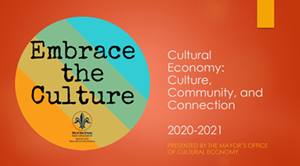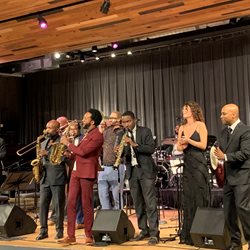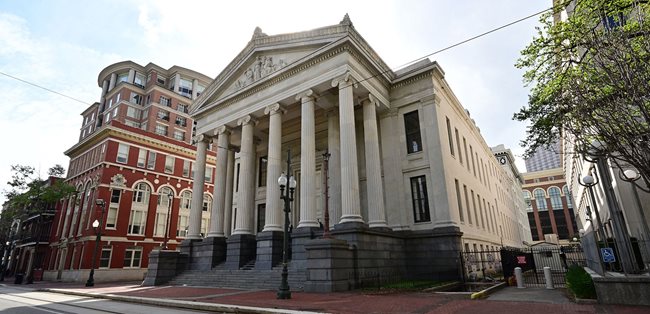Cultural News You Can Use

This GiveNOLA Day, the Mayor's Office of Cultural Economy encourages you to support the work of our city's local arts & culture nonprofits. GiveNOLA Day, an initiative of the Greater New Orleans Foundation, is a one-day online giving event. For 24 hours, everyone who loves the Greater New Orleans region can support their favorite local causes by donating to one or more of 960+ participating nonprofit organizations. Last year's event generated nearly $7.8 million in donations for a record-breaking 951 nonprofits. Since the first event in 2014, GiveNOLA Day has raised over $64.6 million for our region’s nonprofits.
Early giving is now underway through May 6th. Visit www.givenola.org for more information on GiveNOLA Day and learn how to support your favorite local nonprofit organizations.
 Learn More
Learn More
To learn more about how our office works with the cultural economy through initiatives, partnerships, and community, and the impacts of that work, read or download Cultural Economy: Culture, Community, and Connection
Defining the Cultural Economy
 Cultural Economy is defined as the people, enterprises, and communities that transform cultural skills, knowledge and ideas into economically productive goods, services and places. There are six key segments:
Cultural Economy is defined as the people, enterprises, and communities that transform cultural skills, knowledge and ideas into economically productive goods, services and places. There are six key segments:
- Culinary Arts: Food-related cultural products including food processing, specialty food products and locally-owned, full service restaurants (does not include franchise/non-local chain restaurants);
- Design: Individual designers and firms involved in the communication arts such as graphic design, printing, and advertising;
- Entertainment: The performing arts (music, theater, and dance), individual performers, and the film industries;
- Literary Arts and Humanities: Individual writers and editors and book, periodical, and newspaper publishing;
- Preservation: Economic activities focused on the restoration and redevelopment of the built environment including architecture, landscape architecture and a percentage of construction activity focused on preservation and renovation; and
- Visual Arts and Crafts: Individual artists and craftspeople as well as the galleries and museums that present cultural products.
Gallier Hall
This impressive Greek Revival building was the inspiration of James Gallier Sr. Completed in 1853, it served as City Hall for just over a century. It is now home to the Mayor’s Office of Cultural Economy and iconic City events such as Mardi Gras.
More information on Gallier Hall, and how to rent space for weddings, funerals, conferences, parties, and much more can be found at the Gallier Hall website.
